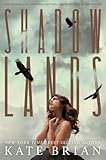The British Ecological Society 2019 Photo Contest Winners Revealed
Language
Reading Level
Listen to Article

It is often said that "a picture is worth a thousand words." That is certainly true of the mesmerizing images of fleeting moments of nature submitted by international ecologists and students for the British Ecological Society's (BES) annual photography competition. Here are a few of 2019's winning entries, announced on November 28, 2019.
"Red Night" by Roberto García Roa

"Red Night," a photograph of the nonvenomous Malagasy tree boa clinging to a tree trunk, was declared this year's "Overall Winner." Taken by Roberto García Roa, the stunning image captures both the beauty of the magnificent reptile and its vulnerability to human threats like poaching and fires. Roa says, “During my visit to Madagascar, I had the pleasure of finding this outstanding snake and photographing it. To offer a dramatic scenario reflecting the conditions that these snakes are suffering, I used an external red light as a source of light and severe blurring to capture the environment.”
"Flames in Flumes" by Nilanjan Chatterjee

Nilanjan Chatterjee's picture of a plumbeous water redstart, waiting to catch a waterborne insect near a small waterfall, won the judge's approval for the best overall student submission. Entitled "Flames in Flumes," it was the photographer's attempt to highlight the struggle the river birds, which capture their prey from fast-moving currents, are likely to face from the slowdown in water flow due to planned dams in rivers across India.
"Sleeping Still" by Felix Fornoff

University of Freiburg's Felix Fornoff perfectly captured the intricate nests of the leafcutter bees with his aptly-titled photo, "Sleeping Still." The protective mothers carefully arrange the oval leaf cuttings in multiple buffering layers to shelter their offspring. The colored eyes indicate the babies are almost ready to emerge.
"The Rhino’s Annual Haircut" by Molly Penny

The ongoing demand for rhino horns — for everything from traditional Chinese medicine to status symbols — has reduced the population of the magnificent animals to just 30,000 specimens globally. To try to save the vulnerable species, ecologists in South Africa, home to over 20,000 southern white rhinos, have resorted to sawing off a portion of the animals' horns, which regrow, annually. Drastic as it seems, "The Rhino's Annual Haircut," captured beautifully in the black-and-white photo by Molly Penny from the University of the West of England, reduces the risk of the animals being brutally murdered.
"For The Love Of Flamingos" by Peter Hudson

Peter Hudson's for "The Love of Flamingos," which captures a heart-shaped cloud of pink flamingos in Kenya, is truly a sight like none other. The winner of the Art of Ecology prize says, "Flamingos are all legs and necks but at the same time graceful and fascinating and I admit I have a deep passion for them, so I was thrilled when, flying high over Lake Magadi, I watched this flock form themselves into a heart shape."
"A Side Of Fries" by Nigel Taylor

"A Side of Fries" — a heart-wrenching image of a long-tailed macaque at Batu Caves, Malaysia, holding a box of McDonald's fries — by Nigel Taylor is just one example of how careless human behavior is endangering animals in the wild.
Resources: Britishecological.org, edition.cnn.com, britishecologicalsociety.org

Get the Workbook for this article!
Workbook contains: Article, Reading Comprehension, Critical Thinking Questions, Vocabulary in Context (+ answers), Multiple Choice Quiz (+ answers), Parts of Speech Quiz (+ answers), Vocabulary Game (+ answers)Cite Article
Learn Keywords in this Article
126 Comments
- rennymarcoalmost 4 yearsHaha! The Macaque behind the one upfront is like, " Gimme those weird lookin' things, they look good! I'm jealous! "
- da_frogabout 4 yearsoh em gee! so cool!
- atom1ckabout 4 yearsthe last one is so interesting!
- pink_koalaover 4 yearsBeautiful!
- unknown_user14over 4 yearsSo majestic!
- bscabout 5 yearsBeautiful!
- boriloverover 5 yearsThese photos are beutiful, yet so very sad. If you notice closley, most of the photos are about us, humans ruining lives of animals.
- heyheygirlabout 5 yearsThe monkey is my favorite
- southernsweeteaover 5 yearsThe bird is so cute!
- spykittenalmost 6 yearsThose pictures are really good!
- spykittenalmost 6 yearsMcDonald's!?!

